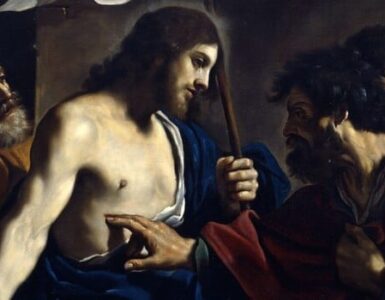For Catholics and non-Catholics alike, the spiritual and physical phenomena which surround the life of Padre Pio draws interest of great proportions. But for many others and certainly for the Church herself, it is the heroic virtue of this humble man that captivates and inspires. His life is one lived in full obedience to the virtues of prudence, temperance, fortitude, and justice.
Born to a simple family in Pietrelcina, Italy in 1887, Francesco Forgione was put under the protection of his namesake, St. Francis of Assisi, at his baptism. He joined Francis’ order at the age of 15 and was ordained a priest in 1910. Shortly after his ordination, Padre Pio began to experience the invisible stigmata, which was soon followed by other unique gifts that amazed even the most skeptical of believers. Many lives were converted by the grace of these extraordinary charisms — bilocation, prophetic visions, healing, reading of consciences — and the stigmata, which he bore with a calm manner, yet endured with great interior and mystical suffering.
Three years to the day from receiving the invisible wounds of Christ, the deep, bloody, and painful marks of the stigmata became visible on his body and stayed with him until his death. Doctors estimated that he may have lost a cup of blood every day during the 50 years he bore the wounds. Millions of people came to see Padre Pio because of these visible manifestations of holiness on his hands, feet and side. But his real virtue resounded in his heart while listening to millions of confessions over his lifetime. From all over the world and from all walks of life, people sought him for direction. The poor, in particular, held a special place in his soul. His spiritual insight and his merciful guidance converted even the hardest of sinners.
His example of long hours in prayer and meditation, vigilant fasting, and a life of interior and exterior suffering reminds us of the Passion of Our Lord and the glory of the Cross. In Pope John Paul II’s homily at Padre Pio’s canonization, he said, “Our time needs to rediscover the value of the Cross in order to open the heart to hope. Throughout his [Padre Pio’s] life, he always sought greater conformity with the Crucified, since he was very conscious of having been called to collaborate in a special way in the work of redemption. His holiness cannot be understood without this constant reference to the Cross.”
Wanting to be remembered as nothing more than a “poor friar who prayed,” Padre Pio died on September 23, 1968. Following his death, the tortuous wounds that were a part of his life for over half a century vanished from his flesh without even a scar. He was beatified on May 2, 1999, and canonized June 16, 2002. After Fatima and Lourdes, San Giovanni Rotondo, the location of the isolated monastery where St. Pio lived most of his life and where his tomb remains, is the most visited site for those in search of healing, hope, and renewal.
From Johnnette Benkovic’s Graceful Living: Meditations to Help You Grow Closer to God Day by Day
When a soul does everything possible and trusts divine mercy, why would Jesus reject such a spirit? If you have given and consecrated everything to God, why be afraid?
— From the writings of St. Padre Pio
The evil one seeks to discourage us through fear. But, as St. Pio reminds us, God calls us to trust. What one fear is the evil one sowing in my heart to discourage me? What does St. Pio recommend that I do? I will do it now and ask the intercession of St. Pio.
Other Saints We Remember Today
St. Linus (79), Pope, Martyr
St. Thecla (117). Virgin, Martyr, invoked for the dying
St. Constantius the Sacristan (1st Century)
image: villorejo / Shutterstock.com











